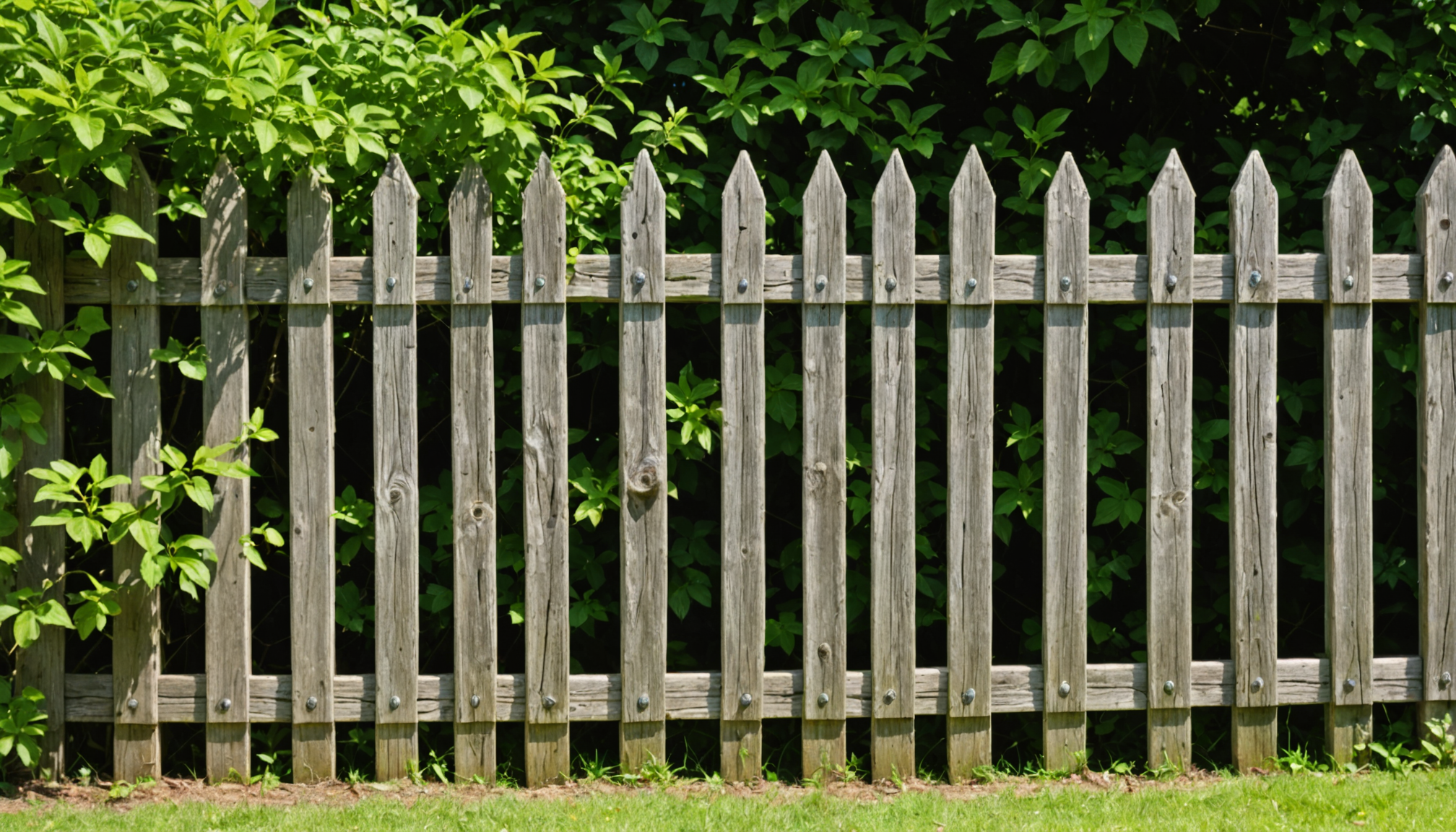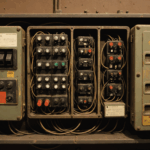Before embarking on a fence remodel, it’s crucial to thoroughly assess the current state of your existing fence. This initial evaluation plays a significant role in determining the scope of your project, the materials you’ll need, and the potential costs involved. Thoroughly understanding the condition of your present fence can save you time, money, and potential frustration down the line.
Begin by inspecting the entire length of the fence. Walk along both sides and note any visible damage, such as warped, broken, or missing boards, protruding nails, and signs of rot or decay. Pay particular attention to the posts; these are the backbone of your structure and require careful examination to ensure stability. If your fence leans or wobbles when gently pushed, it might indicate issues with these foundational elements.
Once you’ve evaluated the physical aspects, consider the practical functionality of your fence. Does it effectively serve its original purpose, whether it’s to provide privacy for your family, define property lines, or keep pets and children safely inside the yard? If it’s no longer meeting your needs, it might be time to not only repair but also rethink the design to better align with your lifestyle.
Additionally, assess any special requirements related to the climate you live in. For instance, in areas with high moisture levels, rot and mildew may be recurring problems, suggesting the need for treated materials or specific finishing techniques in a remodel. In contrast, fences in dry, windy areas might suffer from weakened posts that require reinforcement.
Engage other family members or neighbors who share your fence when evaluating its condition and functionality, as they may provide insights or alternative viewpoints. Also, it’s beneficial to consider the implications of remodeling alongside other projects, such as a new garage installation, which might alter ground conditions or affect fence alignment.
| Aspect Evaluated | Observation | Possible Action |
| Structural Damage | Warped and broken boards | Replace damaged sections with new materials |
| Post Stability | Wobbly and leaning posts | Re-anchor or replace posts |
| Weather Resistance | Signs of rot and mildew | Consider treated wood or weather-resistant finishes |
| Functional Needs | Lack of privacy | Install taller panels or privacy screens |
After completing your assessment, you might conclude that your remodeling efforts would benefit from hiring pros, especially if you discover extensive damage or need major redesigns. Professional insights can ensure your remodeling efforts are structurally sound and aesthetically pleasing, providing you with a renewed fence that enhances both safety and curb appeal.
By investing time in this initial assessment, you lay the groundwork for a successful fence remodel. You’ll not only gain a better understanding of what’s required but also be better prepared to make informed decisions when selecting new materials and designs, ensuring your revamped fence meets your needs and stands the test of time.
selecting materials for your remodel
When embarking on a fence remodel, choosing the right materials is a crucial step that sets the stage for durability, aesthetics, and cost-effectiveness. With a myriad of options available, it’s important to weigh the benefits of each material against your specific needs, climate conditions, and budget.
1. Consider the Purpose and Desired Aesthetic:
– Decide whether your primary goal is privacy, security, decoration, or containment for pets or children. This decision will guide your material choice as different materials offer varying levels of opacity and strength.
– Consider the architectural style of your home and surrounding landscape. The selected materials should complement the overall design. For example, a modern home may pair well with sleek metal or horizontal wood slat fences, while a rustic cottage could benefit from the charm of a classic wooden picket or natural stone wall.
2. Evaluate Material Durability and Maintenance:
– Wooden fences, such as cedar or redwood, offer natural beauty and are popular for their classic appeal, but require ongoing maintenance to prevent rot, pests, and weathering. Opt for pressure-treated wood to enhance longevity.
– Vinyl is an excellent low-maintenance alternative that resists fading and cracking, although its color options may be limited compared to wood stains and paints.
– Metal fences, including aluminum and wrought iron, provide robust security and require minimal upkeep. However, they may require periodic rust prevention treatments in humid climates.
– Composite materials, though more costly upfront, blend wood fibers with plastic to offer a balance between the natural look of wood and the low maintenance of vinyl.
3. Account for Climate and Environmental Factors:
– In humid or rainy regions, choose moisture-resistant materials or apply appropriate protective coatings to wood. Vinyl and composite materials perform particularly well in such climates.
– For areas prone to intense sun exposure, be conscious of material fade resistance. UV-inhibiting finishes can help extend the life of wooden fences, whereas vinyl and aluminum naturally withstand UV rays without discoloration.
4. Budget Considerations:
– Establish a clear budget as costs can vary widely depending on the materials chosen. Wood is often the most affordable option initially but consider long-term maintenance costs. Vinyl and composite may require a higher initial investment but offer savings over time due to reduced upkeep.
– Shop around and compare prices from different suppliers. Bulk purchasing or sourcing materials from reputable supply stores can sometimes yield cost savings.
5. Engage the Family or Consult Professionals:
– Discuss your material choices with family members who will be impacted by the remodel. Their input can provide helpful insights, especially if specific features are desired that you might overlook.
– For complex installations or when tackling materials you’re unfamiliar with, consider hiring pros. Professionals ensure that the materials are used effectively and that the installation process is smooth, which can prevent future issues and enhance the fence’s longevity.
By carefully selecting the materials that align best with functional requirements, aesthetic preferences, and environmental conditions, your remodeled fence will not only serve its intended purpose but also become a harmonious part of your property for years to come.
design ideas for modern fences
Modern fence design offers a plethora of opportunities to transform the visual and functional aspects of your outdoor space. Taking inspirations from contemporary architecture, a modern fence isn’t just a boundary line, it’s an extension of your house and environment, adding both character and utility to your property.
One of the most compelling features of modern fences is their ability to effectively blend aesthetics with functionality. Embrace sleek, clean lines and minimalistic structures which contribute to a sophisticated and uncluttered look. Materials such as metal, wood, and even glass are often beautifully combined to create visually striking contrasts. Metals like aluminum or steel provide a sleek and durable framework, while the natural textures of wood introduce warmth and elegance to the structure.
Horizontal slats have emerged as a popular trend in modern fence design. This style not only creates an illusion of extended space, making your yard appear larger but also gives a contemporary flair to the perimeter. For those seeking privacy without compromising on a modern aesthetic, the use of staggered or varied width slats can create intriguing visual patterns that are both functional and decorative.
For a trend-setting fence, consider incorporating mixed materials. Combining natural elements with industrial ones can deliver a striking yet cohesive look. Picture a fence that utilizes a base of concrete or stone, topped with wooden slats or metal elements to capture both strength and refined style. Such combinations are particularly effective for homes with mixed architectural styles or for homeowners wanting to echo the textures found in their home’s construction.
Integrating lighting elements into the fence design is another modern approach that not only enhances security but adds dramatic interest to your landscape design. Strategically placed LED lights along the top or bottom of your fence can illuminate path lines, provide ambient evening lighting, and highlight the fence’s design details, offering a welcoming glow when night falls.
Reimagine Traditional Designs: By giving a twist to conventional designs, you can achieve a fresh, modern look that respects tradition while stepping confidently into the present. For instance, updating a classic picket fence with metal pickets or experimenting with diagonal wood patterns creates a unique look that stands out.
Incorporating green elements such as vertical gardens or planter boxes directly into the fence is a sustainable approach that’s gaining momentum. This concept lets your fence contribute to the environment, supporting biodiversity by providing greenery spaces or even housing small climbing plants that beautifully soften and complement your fence’s structure.
Lastly, consider what modern design means within the context of your family and lifestyle. A modern fence should cater to your specific needs, whether it’s ensuring safety for children and pets, establishing clear property lines, or providing privacy for outdoor entertaining areas. Consulting your family throughout the design process can ensure you meet these practical demands while keeping an eye on style, creating a truly bespoke solution that works universally.
By exploring these innovative design ideas, your remodeling project can redefine your outdoor space, reflect your personal style, and ultimately enhance your property’s curb appeal, creating a sense of modernity that is as functional as it is stunning.
step-by-step fence installation
Starting your fence installation project requires organization and attention to detail to ensure that the end result is secure, visually appealing, and durable. Begin by gathering all necessary tools, such as a post hole digger, level, hammer, and power drill, along with your chosen materials. It’s critical to have everything on hand before starting to avoid interruptions and ensure a smooth workflow.
Begin by marking your property line and determining the placement of your new fence. Measure distances accurately and mark post placements with stakes and string. Ensure that the fence layout aligns with your initial design plans, providing privacy or creating a boundary as needed. Consulting any family members who might use the outdoor space can provide additional insight into functional placements that might have been overlooked.
Next, focus on the foundation by digging holes for the fence posts. The depth of these holes should be at least one-third of the total post height to ensure stability. If you’re installing in an area prone to frost, make sure that the holes reach below the frost line to prevent shifting. Mixing concrete to secure the posts is a surefire way to provide a stable and long-lasting foundation. Fill the holes with concrete and place a post in each, checking with a level to ensure they stand perfectly vertical. Allow the concrete to cure fully according to the manufacturer’s instructions before proceeding.
With the posts securely in place, start attaching the horizontal rails that form the framework of your fence. Use screws for a sturdy connection, ensuring that they are galvanized or treated to resist rust and weather damage. Maintaining a symmetrical alignment of the rails is key for visual consistency and structural integrity. Utilize a string line from post to post to help ensure each rail is level with the others.
Once your framework is established, the next step is to attach the panels or slats. Depending on your material choice, whether it’s wood, metal, or a composite, position each carefully and fix them to the rails using the appropriate fasteners. Maintain an even gap between the vertical slats if you’re going for a picket-style look or opt for a seamless finish if privacy is your priority. In this step, ensure that the installation respects the design elements you want to highlight, such as horizontal slats for a modern appearance.
Adding a gate requires precision and an understanding of its use within your space. Whether it’s a main entrance, a backyard access point, or an extension towards a newly built garage, the gate needs to be functional and secure. Measure for the gate opening, and install the gate according to the manufacturer’s instructions, ensuring it swings freely and aligns with the fence line.
Throughout the entire process, continuous checks for level and plumb will prevent future sagging or misalignment issues. An extra pair of hands can be invaluable during this phase, whether from family or by hiring pros for particularly demanding tasks. Professionals can provide insights on aspects like customizing pre-made panels or handling unusual site conditions.
After completing the installation, a thorough inspection ensures each component is secure and functioning as intended. Address any adjustments or reinforcements promptly to guarantee long-term durability. Cleaning up the site by removing debris and returning tools to storage marks the successful completion of your fence installation.
Reflecting on the entire process can offer insights into how your new fence integrates with your property, echoing the design themes around your home. By following these steps, coupled with your careful selection of materials and design elements, your remodeled fence will stand as a testament to both aesthetics and practicality, enhancing your home’s exterior for years to come.
maintaining your newly remodeled fence
After completing your fence remodel, it’s essential to implement a maintenance routine to keep your fence looking pristine and functioning effectively. Regular upkeep not only prolongs the life of your fence but also ensures that it remains an asset to your property, providing safety and privacy for your family.
Start by establishing a regular cleaning schedule tailored to the material of your fence. For wood fences, this may involve using a mild detergent mixed with water and a brush to remove dirt and mildew that can accumulate over time. Rinse with a garden hose to avoid any detergent residues. Metal fences, on the other hand, typically require less maintenance but should be inspected periodically for signs of rust. If any rust spots are found, scrub them with a wire brush and apply a rust-resistant paint to prevent further corrosion.
Inspect your fence for any signs of wear or damage, such as loose boards or panels, wobbly posts, or gate misalignment. Wooden fences may show signs of rot, particularly if they’re not properly sealed or stained. In such cases, reapply a water-repellent sealer or a fresh coat of stain to protect against the elements. This treatment is especially important in climates with significant rainfall or humidity, as moisture can accelerate deterioration. For vinyl fences, a simple wash may be sufficient to handle most issues, but check for cracks and replace damaged sections as needed.
Pay attention to environmental factors that may impact your fence. Nearby trees and shrubs can present potential risks; trim back any branches that might drop debris or press against the fence, altering its shape and stability. Check for any ground shifts or erosion near your posts, particularly if the fence is adjacent to a new landscape feature like a garage or patio.
Maintaining your fence also involves paying attention to hardware such as hinges, latches, and screws. Over time, these parts can loosen due to weather changes or regular use. Tighten any loose fasteners and replace any rusted components to ensure gates function smoothly and the integrity of the fence is upheld.
If you opted for a fence with an integrated lighting system, regularly check bulbs and circuits to prevent electrical issues. Cleaning the lenses of outdoor lights and clearing debris away from sensitive electrical components can help to keep the lighting functional and efficient.
For those who prefer to leave maintenance to professionals, hiring pros can provide peace of mind. Professionals can perform more detailed inspections and maintenance, which can extend the lifespan of your fence significantly. They can also offer insights into any needed repairs before they escalate into larger issues.
Incorporating a family maintenance day can turn upkeep into a shared activity, involving everyone in taking pride in maintaining the property. This not only ensures tasks are completed but also fosters a sense of responsibility and appreciation for your beautifully remodeled fence.
Through consistent care, your newly remodeled fence will not only preserve its initial allure but continue to serve its purpose splendidly, enriching your property’s aesthetics and functionality for years to come.
In conclusion, a successful fence remodel involves careful assessment, material selection, thoughtful design implementation, precise installation, and ongoing maintenance. By approaching each step with diligence, you create a fence that not only meets your functional needs but enhances your property’s charm and value. Remember to periodically review your fence for any necessary maintenance or upgrades, ensuring it remains a lasting reflection of both quality and style. Your revamped fence, protected by regular upkeep, will continue to provide security, privacy, and beauty to your home and family well into the future.


